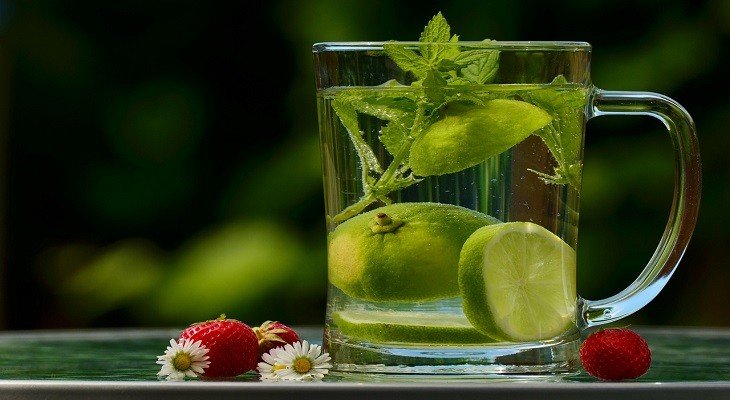Can You Reverse Type 2 Diabetes?
2 years ago 503Diabetes
is a category of metabolic illnesses defined by hyperglycemia caused by insulin
production, insulin action, or both. Diabetes' persistent hyperglycemia is
linked to long-term damage, malfunction, and failure of several organs,
including the eyes, kidneys, nerves, heart, and blood vessels.
Polyuria, polydipsia, weight loss, occasionally with polyphagia, and impaired vision are symptoms of severe hyperglycemia. Chronic hyperglycemia may also cause development impairment and susceptibility to some illnesses. Acute, life-threatening complications of untreated diabetes include hyperglycemia with ketoacidosis or nonketotic hyperosmolar syndrome.
Diabetes long-term complications include retinopathy, which can lead to vision loss; nephropathy, which can lead to renal failure; peripheral neuropathy, which can lead to foot ulcers, amputations, and Charcot joints; and autonomic neuropathy, which can lead to gastrointestinal, genitourinary, and cardiovascular symptoms, as well as sexual dysfunction. Diabetes patients are more likely to develop atherosclerotic cardiovascular, peripheral arterial, and cerebrovascular disease. Diabetes is frequently associated with hypertension and changes in lipoprotein metabolism.
Diabetes is quickly approaching the status of a possible epidemic in India, with over 62 million diabetics now diagnosed.In 2000, India (31.7 million) had the greatest number of diabetics in the world, followed by China (20.8 million) and the United States (17.7 million) in second and third place, respectively..
Difference between Type 1 and Type 2 Diabetes?
Insulin is the hormone responsible for converting glucose to
glycogen. It is manufactured in the pancreas. Unlike type 1 diabetes, in which
the pancreas limits or even stops insulin production entirely, type 2 diabetes
occurs when the pancreas produces adequate insulin but glucose is not processed
for some reason. Consider insulin to be a key that, when linked to the muscles
and liver, opens a lock to allow glucose enter.
Lifestyle changes for diabetes reversal
Optimal weight range: Obesity is obviously connected to diabetes. A person with a BMI of 35 or above is 93 times more likely to develop diabetes than someone with a BMI of 25 or less. Even if you are slim, having adequate muscle mass is critical. Because muscles require more glucose to operate, there is less free floating glucose.
Whole food plant-based diet: When it comes to diabetes control, a plant-based diet is the most effective. A plant-based diet permits you to consume anything derived from plants. You avoid meat, eggs, and dairy, but prefer to consume foods that are little processed and as close to nature as possible. There is no need to be concerned about portion control or deprivation.
Consume at least two servings of beans/pulses every day: Chickpeas, black beans, mung beans, rajma, and other legumes are among your alternatives. Consider eating plain rice. This raises your blood glucose levels. When combined with pulses or lentils, the same rice reduces blood glucose rise by nearly half. Not only that, but if you eat pulses at lunch, your blood glucose levels will be slower for supper, even if you eat simple white sugar! This phenomenon is known as the lentil effect, and it has received a lot of attention. This is due to the fact that beans are PREbiotic fibre for the gut and stimulate the synthesis of SCFAs (short chain fatty acids). These SCFAs aid in the absorption of insulin in the body.
De-stress:
You may make as many adjustments to your diet and fitness routine as you want, but if you can't handle emotional stress, the rest is meaningless. When you are under stress, your body produces the 'fight or flight' hormone. This hormone is essentially in charge of releasing extra blood sugar into your blood vessels to aid you in your fight or flight response. But there is nothing to fight or flee over in this day and age. When you have deadlines to meet, loans to pay, and relationships to manage in today's environment, where do you find the time to fight?
There are several strategies to reduce stress, including taking time for yourself, increasing your physical health, learning time and people management skills, and experimenting with the tapping meditation technique.You will need to consult with a professional to determine which type of relaxation is best for you. This expert might be anyone ranging from a therapist to a friend to a spiritual guru. Different things are beneficial to different people. However, locate someone to assist you on an individual basis.
Increase your physical activity
The advantages of being more active include decreasing weight, lowering blood sugar levels, and increasing insulin sensitivity - which helps keep blood sugar levels within a normal range.
Moderate to moderate cardiovascular exercise – walking, jogging, biking, swimming – for 30 minutes most days for a total of at least 150 minutes per week is an activity that promotes weight reduction and helps maintain a healthy weight.
Weightlifting, calisthenics, and yoga – 2 to 3 times a week to build strength, balance, and stamina.
Limiting inactivity - every 30 minutes, stands, walk, or do some modest movement to break up inactive time.













